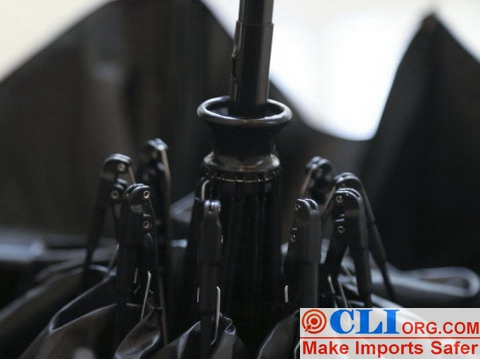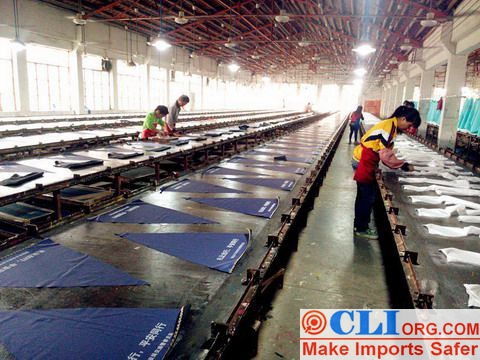Categories:● Voice Of Quality Quality Cases Quality Mirror
Tags:2682 Umbrella silk screen inspection
By Flora Lee • 07/2 @ 7:28 • How is the Colorful Umbrella Formed?已关闭评论
Umbrella is a tool for shading or sheltering rain and snow. It is generally divided into umbrellas and sun umbrellas. Umbrella making materials usually include ductile fabrics, and other materials and entanglements that can be used as skeletons. In the production process of the umbrella, the rib is the soul of the rain gear, and its durability is directly proportional to its quality. The umbrella stand used must be of reliable quality and of a solid material. The purchase of umbrella cloth is also very strict. After each roll of umbrella cloth is put on the factory, it must be installed on the running machine to ensure that there is no yarn, damage and so on.

After ensuring the inspection of the umbrella cloth, immediately start the large cut and the small cut.Then they can be printed.The most commonly used umbrella printing methods are silk screen,offset printing and digital thermal transfer. Silkscreen umbrellas are relatively cheap, but there are some restrictions on color. If there are many colors and there are gradient colors, it may not be possible. However, some importers will use umbrella silk screen inspection and hope to rework the products with poor silk screen printing in the early stage.Offset printing is more advantageous than silk screen printing in color,but the surface layer of the fabric will have a layer of gelatinous material.If it is folded, it will stick together. When it is opened again, the color may be staggered, and the cost of opening the offset printing is also higher. The advantage of digital thermal transfer is that there is no limit to color, high color reproduction, and small batch printing, but the disadvantage is higher cost.

In the view of umbrella manufacturers,the most cost-effective printing method is silk screen printing.The universal silk screen is to stretch the silk fabric,the synthetic fiber fabric or the metal mesh on the frame, and the screen printing plate is made by hand-painting or photochemical plate making.During printing,the ink is transferred to the substrate through the mesh of the graphic portion by the extrusion of the squeegee to form the same graphic as the original.In the umbrella silk screen inspection,the first step is to understand the whole process of the silk screen printing. First, use a drying machine to make a stencil first, then fix the stencil on a square wooden frame, after which the workers will pour the paint. In the wooden frame, the wooden frame is placed on the triangular umbrella cloth,then the oil sweep a few times,and the pattern will be printed on the umbrella cloth. This program can be done mechanically or manually.

At present, most of the rain gear manufacturers in China are developing towards automated production lines, such as rib molding,umbrella finishing, and canopy pressing, which can realize automated production. However, in the silk screen printing process, further improvement is needed for technology,it can only be considered semi-automatic production now. However, it does not affect the import of rain gear from China.The importer should check whether the factory has a complete quality management system to ensure the quality of the products. The finished product after umbrella silk screen inspection should keep the pass-through rate above 99%, thus making the market receding rate is stably lower than 0.1%.
With the gradual improvement of consumers’ aesthetics, in the era of individuality, umbrellas are used as the belongings of the four seasons, and the distinctive umbrella printing can show the personality.Using silk screen umbrellas, the pattern is colorful and clear, so in the umbrella inspection, the umbrella silk screen inspection is particularly important.The appearance of the finished product must be perfect and beautiful, without affecting the purchase of the consumer, ensuring that the finished product can be sold smoothly.
This article is an original article for CLI Inspection, who is committed to providing high-quality product inspection technology and know-how sharing for global importers and retailers to make imports safer.
All rights reserved. The contents of this website provided by CLI Inspection may not be reproduced or used without express permission.
For reprint, please contact with CLI Inspection, thank you.
Senior professionals in the field of quality inspection are committed to finding and sharing valuable experiences.